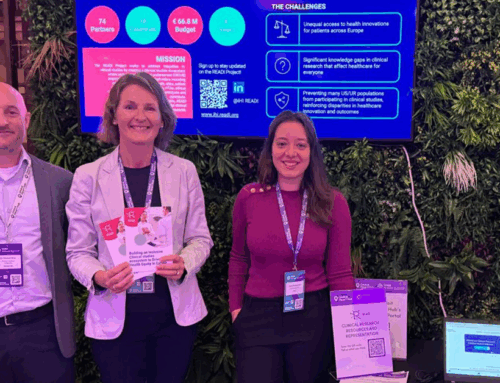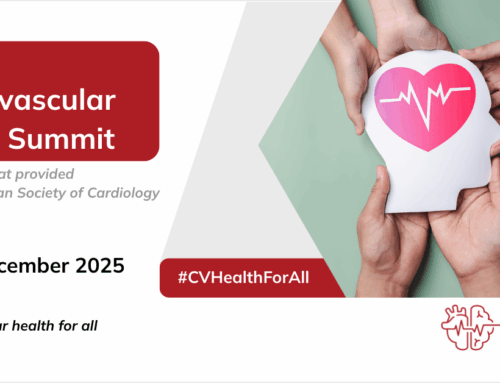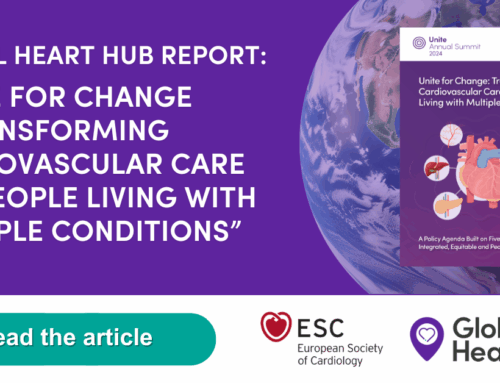Unite for Change: A Call to Transform Cardiovascular Care for People Living with Multiple Conditions Worldwide
June 10, 2025
Today, Global Heart Hub launches its transformative Unite for Change: Transforming Cardiovascular Care for People Living with Multiple Conditions report, a policy roadmap built on five key joint asks for integrated, equitable and people-centred care, advocating to drive change and transform cardiovascular care for people living with Multiple Interconnected Chronic Conditions (MICC). The report is the output of the 2024 Unite Summit held in Dublin last November.
Cardiovascular disease (CVD), the world’s leading cause of death, rarely exists in isolation. Millions globally are living with Multiple Interconnected Chronic Conditions such as diabetes, stroke, chronic kidney disease, liver disease and obesity. Yet, health systems remain ill-equipped to support them.
The Unite Summit convened lived experience communities from across these connected conditions, alongside policymakers, clinicians and researchers, to tackle the urgent need for integrated, people-centred cardiovascular care. With over 165 delegates from 34 countries, including 65 patient organisations and 20 expert speakers, the Unite Summit was an unprecedented moment of unity across the cardiovascular, kidney, liver, diabetes, obesity and stroke communities.
Speaking about the event, Neil Johnson, Executive Director of Global Heart Hub said, “Those with lived experience are calling for change. People living with comorbidities are an increasing reality, and there is an urgent need for a model of comprehensive, integrated care”.
Addressing the complexities of managing connected conditions requires a fundamental shift towards integration, collaboration and people-centred care. Improving detection, diagnosis and care coordination can ensure more responsive systems and meaningful impact for people managing multiple conditions.
The Unite for Change report presents a clear policy roadmap built on Five Key Joint Asks, shaped by people with lived experience and supported by global health leaders:
- Multidisciplinary Care & Navigation – Ensuring coordinated, specialist-led teams and patient navigation support.
- Early Detection & Community Screening – Scaling proactive, accessible screening for high-risk communities.
- Innovation & Digital Health Access – Accelerating the adoption of AI, telehealth and integrated digital tools.
- Equity in Care – Closing gender, geographic and socio-economic gaps in diagnosis and treatment.
- Prevention, Empowerment & Mental Health Integration – Embedding mental health and patient advocacy into care models.
Despite advancements in healthcare, people living with Multiple Interconnected Chronic Conditions continue to face significant barriers to effective, coordinated and people-centred care. A survey conducted during the event revealed that 88% of participants believed poorer outcomes for people living with MICC were largely due to a lack of integrated care and ineffective communication between healthcare providers.
People with lived experience must navigate complex, disconnected healthcare systems alone, with no clear point of contact to guide them. The absence of care coordinators and structured patient pathways leads to redundant testing, conflicting medical advice and poor continuity of care.
Transforming healthcare requires collective action from policymakers, healthcare professionals, patient organisations, industry and academia. Each stakeholder has a vital role to play in bridging systemic gaps and ensuring that people-centred solutions become a reality.
Global Heart Hub is calling on all healthcare stakeholders to take immediate action to embed these reforms into national and international health strategies, including the forthcoming European Cardiovascular Health Plan.
To read the report in full click here.
Integrated care models can improve health outcomes for people with heart failure and connected conditions. When care is integrated across healthcare providers, it leads to fewer hospitalisations, better quality of life, and longer survival for the patients. Coordinated communication between providers is essential to ensure patients don’t feel lost.







